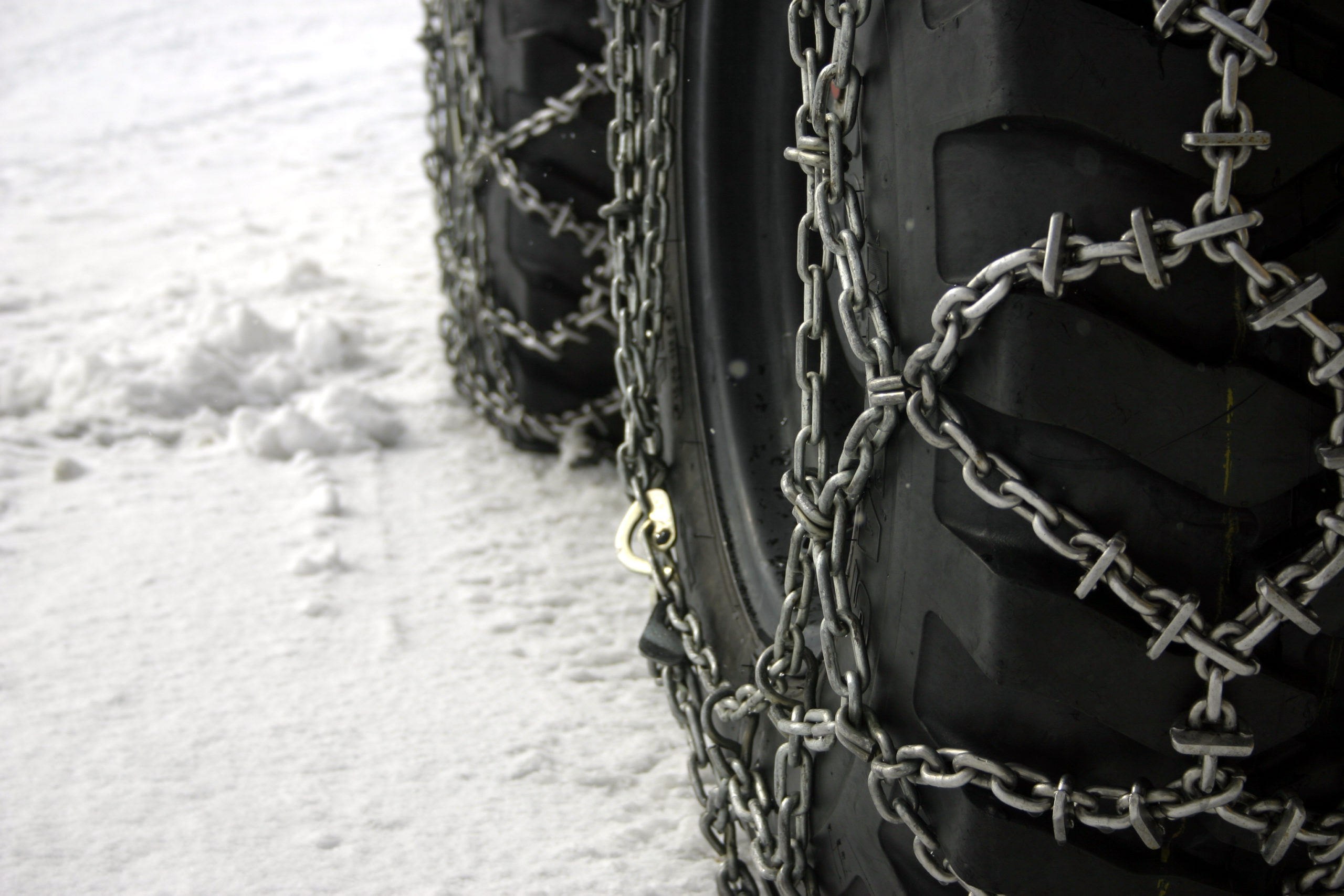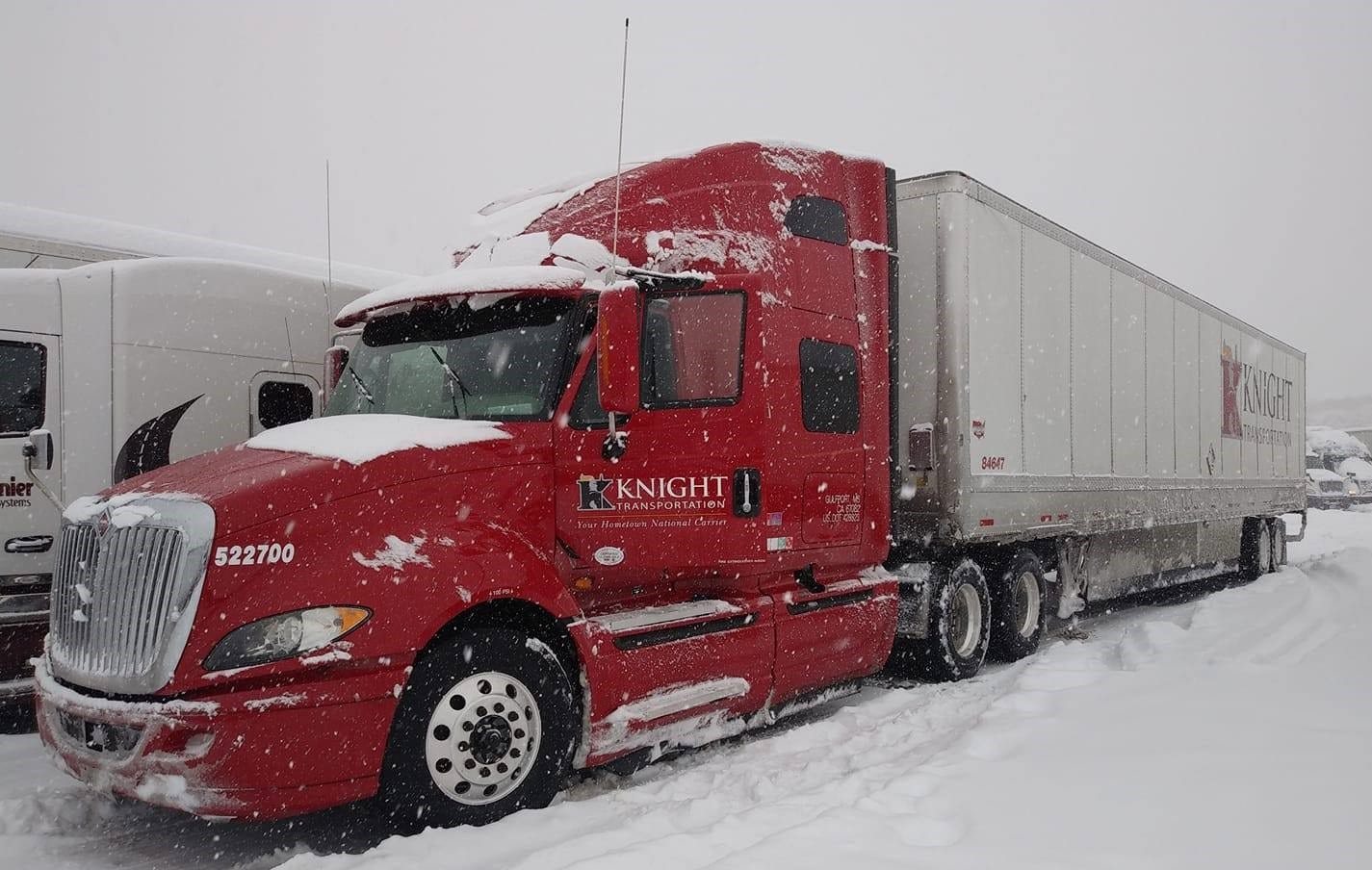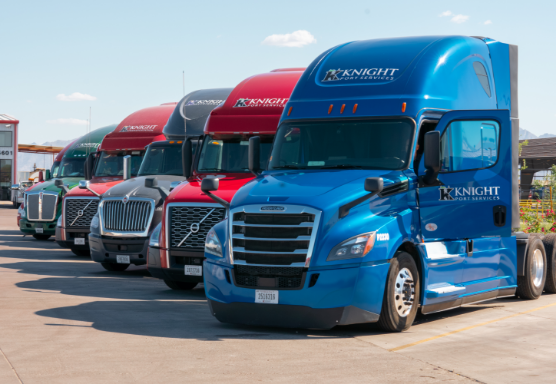How to Put Snow Chains on Semi-Truck Tires

Winter weather and slick, snowy surfaces don’t exactly mesh well with big-rig trucks. Thankfully, as a driver, you can install snow chains on your tires to give you much-needed stability and grip on slick roads. Read on for more information:
Step-by-Step Guide to Putting Snow Chains on Semi Tires
Of course, every truck is slightly different as are chains. Therefore, you might have to alter some steps to your individual needs. Here’s how to go about putting chains on your semi:
-
- Park in a safe location away from traffic.
-
- Take chains out of the storage bag.
-
- Lay out chains, ensuring that the hooks are facing up.
-
- Clean off hooks, brushing snow away from the chain’s surface.
-
- Drape chains over the tires, knocking any remaining snow off the chains. Be sure to keep the hooks facing out and the tensioners should be open.
-
- Connect the chains. This will likely involve you getting under the truck to do so.
-
- Check the links to make sure you have the same number of links on the outside of the tire as you do on the inside. If you find an imbalance, remove chains and start the process over as the chains will not rotate property if they are imbalanced.
-
- Move the truck forward to tighten the chains.
-
- Tighten chains with a tensioning tool. Leave around one finger of space between the chain and tires.
When to Put Chains on Tires
Obviously, chains are not necessary except in wintery conditions where the roads are covered in ice and snow. In fact, putting chains on your truck if there are no such conditions can actually cause harm to your truck. Keep in mind, on some mountain roads, there are chain laws, requiring all trucks to have chains installed before they can proceed. Finally, you can install chains when your truck is stuck to help cut through the precipitation.
How to Drive with Chains on Tires
The name of the game when driving with chains on your tires is to drive slow. Most trucks won’t go over 30 mph with chains. It’s also important that you allow for the added weight of the chains. If your truck takes up to six chains, this can mean adding around 1,000 pounds to your vehicle weight. Some people prefer snow socks as an alternative to chains for this reason as they are much lighter. However, snow socks don’t meet the chain mandates that are set for some mountainous roads.
Different Type of Tire Chains
There are a few types of chains to choose from for truck tires. They are outlined below:
-
- Singles: This type of chain will cover one tire.
-
- Doubles: This type of tire chain will wrap about two tires.
-
- Triples: This type of chain will wrap about two tires and align in the middle to hook up. This is designed for use with duals and helps secure them.
How to Remove Tire Chains
Once you hit dry or wet pavement that isn’t coated in snow, it’s time to remove your tire chains. Pull over to a safe location out of the way of traffic and begin removing your chains. Once you have them removed, store them again in your truck for the next time you will need to employ them to get you safely from point A to point B.
Dealing with snow chains is most certainly not the most glamorous or fun aspect of being a truck driver. However, if you frequent mountainous areas or locations that tend to experience heavy snowfall, it’s important to have this skill at the ready and have chains on hand to keep you from getting stuck or sliding all over the road.
Interested in driving for Knight Transportation? View Trucking Jobs
You may also enjoy What To Do If You Start Having Truck Brake Issues



